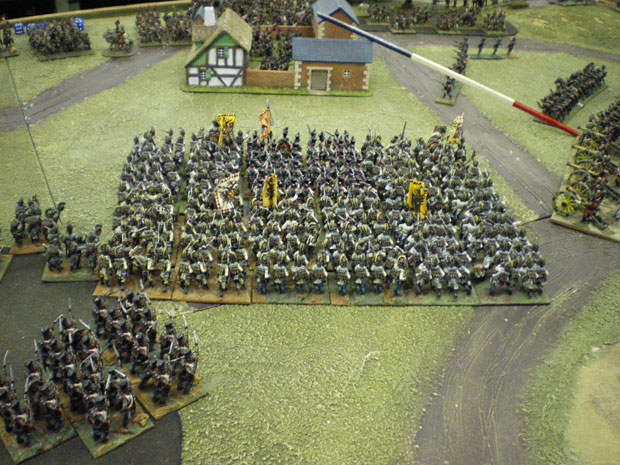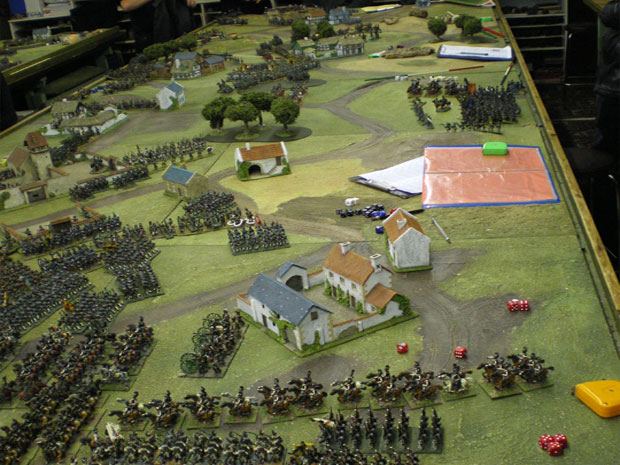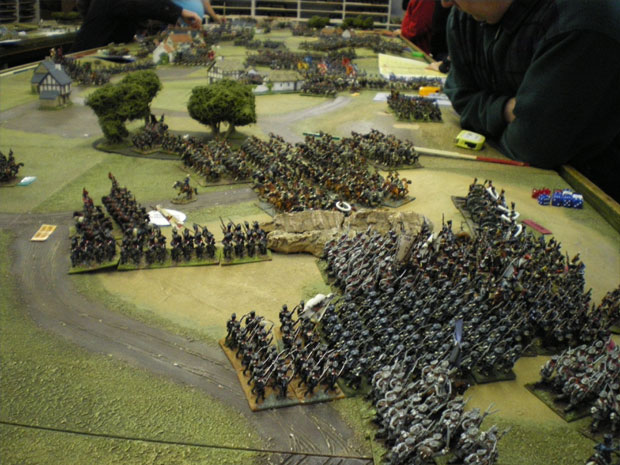I thought I would write a brief overview on the way we play our games.
There are plenty of useful tools that we use, such as the measuring sticks. These are for our artillery, six pound, eight/nine pound and 12 pound as well as the range sticks for Musket and Rifle.
They are all colour coded depicting, short, effective and long range for the small arms and Canister, effective and long for the artillery. They each have their own colour as well, which helps in remembering the right ones to use (There’s always the want to use the longest available, to reach your target). As an example, twelve pound sticks are dark blue in their long range band and six pound are red.

The use of Musket measuring sticks
In addition to these useful tools we also have a large amount of “labels”. These are small laminated and again colour coded pieces of information that you can physically place next to unit in order to help you remember what they are actually doing during their compulsive movements. (i.e. the part of the move that you have no control over the units actual behaviour, such as retreating or becoming unformed)

The use of Quickplay rulesets and other useful items
We also have an angle indicator that allows you to get a more precise idea on how many bases are in the correct angle for firing. It also comes in handy for determining the correct angle of wheel before charging.

The use of labels and some white hoops to denote cavalry casualties
To denote casualties, artillery and cavalry have white curtain rings placed over the casualty figure, a red hoop denotes an officer casualty. Infantry are tracked on one of our roster sheets, these are handily boxed so no matter what size your battalions you can just cross them off as you take the hits to the troops. First volley, officer casualty and solid shot damage to villages are also recorded on this sheet. There is the obvious use of tape measures for movement.
It’s worth mentioning that we use colour co-ordinated tiles, blue for French and Red for allies. These allow us to record, one or two battalions of infantry with up to twelve skirmishers, two squadrons and up to a regiment of cavalry, or a battery of artillery on a single tile. These provide a feel for “The fog of War” as it were. The first turn will be deployed using these tiles and the first move is then conducted using these. Once the turn has ended anything within 54” and line of sight, (which also happens to be the maximum range for the twelve pound stick) replaces the tile in the formation reflected in it’s previous turns movement, or as the owner dictates if they remained stationary. Any tile that is behind a feature, such as a wood, slope, village or in a village and outside of 4” visibility remains on the tile. This can work to your advantage, as the troops, while appearing to be there will not be clearly identified. (unless of course the tile is in a village, then the only troop it can be is infantry, the mystery will be it’s number and quality.
